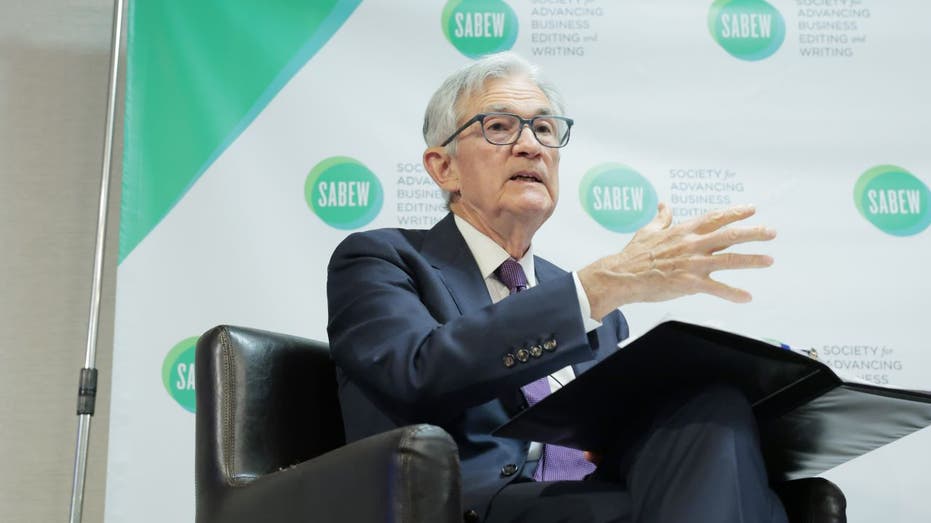A Mornings with Maria panel weighs in on the rally and melt-up in the markets, Big Tech earnings, GDP growth and the Federal Reserves rate decision.
Federal Reserve Governors Michelle Bowman and Christopher Waller on Friday released statements outlining why they supported an interest rate cut at this week’s meeting. It marked the first time in more than 30 years that two Fed governors dissented from a decision about rates. The last time was in 1993.
Bowman and Waller on Wednesday dissented from the Federal Open Market Committee’s (FOMC) 9-2 vote to hold the Fed’s benchmark federal funds rate at a range of 4.25% to 4.5%, with both saying they would’ve supported a 25-basis-point cut to the key interest rate.
Dissents by FOMC members occur periodically, and the most recent dissent came from Bowman in September 2024, when she argued the Fed should have cut interest rates by just 25-basis-points instead of the 50-basis-point cut that policymakers voted to proceed with.
Bowman said in her latest dissent that the Fed should have cut rates and wrote, “Inflation has moved considerably closer to our target, after excluding temporary effects from tariffs, and the labor market remains near full employment.”
FEDERAL RESERVE HOLDS KEY INTEREST RATE STEADY FOR FIFTH STRAIGHT MEETING DESPITE TRUMP’S PRESSURE
Federal Reserve Governors Michelle Bowman and Christopher Waller explained their dissents from the Fed’s decision to leave rates unchanged. (REUTERS/Ann Saphir/File Photo / Reuters)
“With economic growth slowing this year and signs of a less dynamic labor market, I saw it as appropriate to begin gradually moving our moderately restrictive policy stance toward a neutral setting. In my view, this action would have proactively hedged against a further weakening in the economy and the risk of damage to the labor market,” Bowman explained.
She went on to say that she has gained “even greater confidence that tariffs will not present a persistent shock to inflation,” which warrants more focus on risks to the employment side of the Fed’s dual mandate.
Waller explained in his dissent that central banks should “look through” tariffs as “one-off increases in the price level” that “do not cause inflation beyond a temporary increase.”
TRUMP SLAMS POWELL AS ‘MORON’ AND CALLS FOR FED’S BOARD TO TAKE CONTROL OF POLICY MOVES
He cited economic data including soft growth in the first half of 2025, with real gross domestic product (GDP) at 1.2%, as suggesting the monetary policy rate should be closer to neutral given the “temporary” effects of tariffs on inflation and the labor market near full employment. Waller said the median FOMC participant estimates the neutral rate to be about 3%, which would imply cuts of 125 to 150-basis-points from the current range.
“My final reason to favor a cut now is that while the labor market looks fine on the surface, once we account for expected data revisions, private-sector payroll growth is near stall speed, and other data suggest that the downside risks to the labor market have increased,” he wrote.
Waller said that he respects the FOMC’s majority view that a “wait and see” approach on the impact of tariffs on inflation was more appropriate, saying that different views are healthy for robust policy discussions. But he added that, “I believe that the wait and see approach is overly cautious, and, in my opinion, does not properly balance the risks to the outlook and could lead to policy falling behind the curve.”
TRUMP HITS POWELL AS ‘TOTAL LOSER’ AFTER FED LEAVES RATES UNCHANGED
Waller added that he doesn’t think the FOMC should cut rates on a predetermined path and that if tariffs don’t cause an inflationary shock, cuts can continue, and if they do cause surprises to inflation and employment, the Fed can pause those cuts.
During his press conference after the FOMC decision, Federal Reserve Chair Jerome Powell acknowledged the dissents and said he appreciated that they provided clear explanations of their thinking and that different views are healthy on committees such as the FOMC. He also said that while tariff-induced price hikes could be brief, one time occurrences, there remains the possibility that it drives more inflationary pressures.

Federal Reserve Chair Jerome Powell said the Fed is well-positioned in its current posture to respond to deteriorating economic conditions. (Anna Moneymaker/Getty Images / Getty Images)
US JOB GROWTH COOLED IN JULY AMID GROWING ECONOMIC UNCERTAINTY
Following the FOMC announcement on Wednesday, the Commerce Department on Thursday released its personal consumption expenditures (PCE) index. The Fed’s preferred inflation gauge showed that inflation accelerated in June, rising from 2.3% to 2.6% on an annual basis – further away from the Fed’s 2% goal.
That was followed by Friday’s weaker-than-expected jobs report, which showed the economy added just 74,000 jobs in July – well below the 110,000 estimate of LSEG economists – while job gains in May and June were revised downward by 258,000.
GET FOX BUSINESS ON THE GO BY CLICKING HERE
Rising inflation figures, and a disagreement among policymakers on how to approach them given the impact of tariffs, coupled with what appears to be a weakening labor market, could complicate the Fed’s path forward.